Revêtement de toiture en métal a gagné en popularité dans le secteur de la construction, grâce à sa durabilité, à son efficacité énergétique et à son attrait esthétique. Que vous soyez un propriétaire à la recherche d'une modernisation moderne ou un entrepreneur à la recherche de matériaux robustes pour votre prochain projet, il est essentiel de comprendre le bardage métallique des toits. Mais avec autant d'options sur le marché, comment savoir quel type de revêtement choisir ? Dans ce guide, nous allons approfondir tout ce que vous devez savoir sur le bardage métallique de toiture, y compris les différents types, les processus d'installation, les composants clés, l'efficacité des machines, et plus encore.
Vue d'ensemble des couvertures métalliques
Le bardage métallique des toitures désigne le revêtement extérieur protecteur et décoratif constitué de divers matériaux métalliques et destiné à protéger les bâtiments des intempéries. Le bardage métallique offre des avantages significatifs par rapport aux matériaux de couverture traditionnels tels que l'asphalte ou le bois, notamment en termes de longévité, de solidité et de résistance aux intempéries. Qu'il s'agisse d'aluminium, d'acier ou de zinc, le bardage métallique constitue une solution efficace, durable et esthétique pour les projets de construction modernes.
Principaux avantages des revêtements de toits métalliques :
- Durabilité: Le bardage métallique dure beaucoup plus longtemps que les matériaux traditionnels, souvent jusqu'à 50 ans ou plus.
- Efficacité énergétique: Les propriétés réfléchissantes réduisent les coûts de refroidissement dans les climats chauds.
- Résistance au feu: La plupart des métaux sont ininflammables, ce qui ajoute une couche supplémentaire de sécurité.
- Esthétique: Disponible en différentes finitions et couleurs pour s'adapter à tous les styles architecturaux.
- Faible entretien: Le bardage métallique nécessite un entretien minimal par rapport aux bardeaux ou aux tuiles.
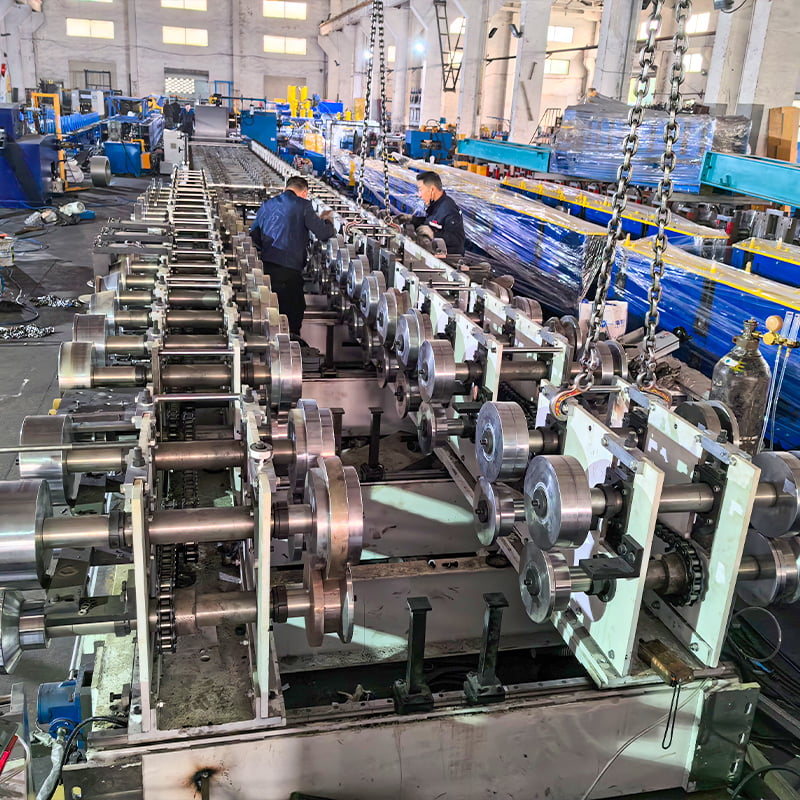
Types de Revêtement de toiture métallique
Il est essentiel de choisir le bon type de revêtement métallique pour votre toiture afin d'atteindre vos objectifs fonctionnels et esthétiques. Chaque type de métal présente des avantages et des inconvénients qui lui sont propres, c'est pourquoi nous allons passer en revue quelques-unes des options les plus populaires :
Tôles ondulées
La tôle ondulée est l'une des options de bardage métallique les plus reconnaissables et les plus couramment utilisées. Leur motif ondulé accroît leur résistance, ce qui en fait un choix durable et rentable pour les toitures.
| Types de tôle ondulée | Description |
|---|---|
| Tôles ondulées galvanisées | Revêtus de zinc pour éviter la corrosion, ils sont idéaux pour les environnements côtiers. |
| Feuilles ondulées Colorbond | Disponibles en différentes couleurs, ils offrent à la fois une durabilité et une finition visuellement attrayante. |
| Tôles ondulées en acier inoxydable | Plus coûteux mais très résistant à la corrosion, notamment dans les environnements acides ou salés. |
Panneaux métalliques à joint debout
Les panneaux à joint debout sont connus pour leur aspect élégant et moderne et leur capacité exceptionnelle à résister aux intempéries. Les joints des panneaux sont surélevés par rapport à la surface, ce qui empêche l'eau de s'infiltrer.
| Types de panneaux à joint debout | Description |
|---|---|
| Joint debout en aluminium | Léger et résistant à la rouille, il convient aux régions où la pluie ou la neige sont abondantes. |
| Joint debout en cuivre | D'une esthétique étonnante, il se patine naturellement au fil du temps. |
| Joint debout en acier | Revêtus de zinc ou d'aluminium pour éviter la rouille, ils constituent une option à la fois robuste et économique. |
Bardeaux métalliques
Pour les propriétaires qui recherchent l'esthétique des bardeaux traditionnels et la durabilité du métal, les bardeaux métalliques sont un excellent choix. Ils imitent l'aspect de l'asphalte ou du bois tout en offrant une longévité accrue.
| Types de bardeaux métalliques | Description |
|---|---|
| Bardeaux d'aluminium | Léger et résistant à la corrosion, idéal pour les toits résidentiels. |
| Bardeaux d'acier | Solide et durable, généralement revêtu pour une protection supplémentaire contre la rouille. |
| Bardeaux de cuivre | Ils offrent un aspect unique et luxueux et durent des décennies. |
Revêtement en zinc
Le zinc est un matériau auto-cicatrisant, ce qui signifie que les rayures ou les imperfections se réparent naturellement avec le temps. Il s'agit donc d'une option durable et nécessitant peu d'entretien pour les toitures.
| Types de bardage en zinc | Description |
|---|---|
| Bardage en zinc naturel | Développe une patine gris mat qui protège le métal de la corrosion. |
| Zinc pré-patiné | Prétraité pour imiter l'aspect du zinc usé par les intempéries dès l'installation. |
Tuiles métalliques
Les tuiles métalliques sont conçues pour ressembler aux tuiles traditionnelles en terre cuite ou en ardoise, mais elles offrent la longévité et la résistance du métal.
| Types de tuiles métalliques | Description |
|---|---|
| Tuiles en aluminium | Léger, il est idéal pour les maisons situées dans des zones exposées aux ouragans. |
| Tuiles en acier | Durable et abordable, disponible en différentes finitions. |
| Tuiles en cuivre | Coûteux mais très durable, il ajoute une touche sophistiquée à n'importe quel toit. |
Processus de fabrication des bardages métalliques
Le processus d'installation d'un revêtement de toiture métallique comporte plusieurs étapes, de la préparation à l'installation finale. Voici un aperçu du déroulement typique des opérations :
1. Planification et sélection des matériaux
La première étape consiste à déterminer le matériau de bardage métallique le mieux adapté à vos besoins spécifiques. Tenez compte de facteurs tels que le budget, le climat et les préférences esthétiques au moment de faire votre choix.
2. Préparation de la surface du toit
Avant d'installer le bardage, la surface du toit doit être préparée. Il peut s'agir de nettoyer la surface, de réparer tout dommage existant et de s'assurer que l'isolation et l'étanchéité sont en place.
3. Mesurer et couper
La précision est essentielle lorsqu'il s'agit d'installer un bardage métallique. Les tôles ou les panneaux doivent être mesurés et coupés avec précision pour s'adapter aux dimensions du toit. Pour ce faire, on utilise des outils et des machines de coupe spécialisés, conçus pour différents types de métal.
4. Fixation du bardage
Les tôles ou panneaux métalliques sont fixés au toit à l'aide de vis ou de clips. Une fixation correcte garantit que le bardage restera solide et étanche, même dans des conditions extrêmes.
5. Scellement et finition
Enfin, les coutures et les joints sont scellés pour éviter les fuites. Les bords et les angles sont recouverts de pièces de finition pour donner à la toiture un aspect fini. Le cas échéant, un revêtement final peut être appliqué pour renforcer la protection et l'attrait esthétique.
Composants clés du bardage métallique
Pour garantir la durabilité et l'efficacité d'un revêtement de toiture métallique, plusieurs éléments doivent être combinés. Vous trouverez ci-dessous une ventilation des éléments clés d'un système de bardage métallique typique :
| Composant | Fonction |
|---|---|
| Feuilles de bardage | Protège le toit des facteurs environnementaux (pluie, neige, etc.). |
| Fixations | Fixe le bardage à la structure du toit, assurant ainsi sa stabilité. |
| Sous-couche | Fournit une couche supplémentaire de protection contre l'humidité. |
| Coutures | Permet de relier les panneaux entre eux et d'assurer l'étanchéité. |
| Pièces de garniture | Couvre les bords et les coins, donnant un aspect poli. |
| Isolation | Améliore l'efficacité énergétique et réduit le bruit. |
| Pare-vapeur | Empêche l'humidité de pénétrer dans la structure du toit. |
-
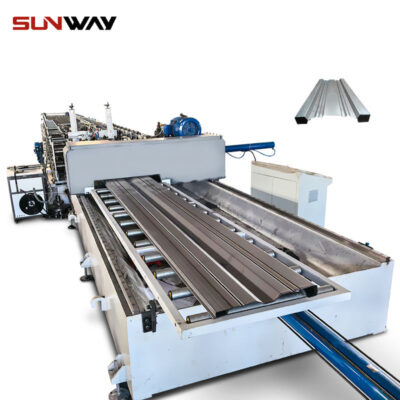 Petit pain de conseil de chariot formant la machine
Petit pain de conseil de chariot formant la machine -
 Machine de formage de bornes d'extrémité de glissières de sécurité pour autoroutes
Machine de formage de bornes d'extrémité de glissières de sécurité pour autoroutes -
 Profileuse pour poteaux d'autoroute U/C
Profileuse pour poteaux d'autoroute U/C -
 Machine de formage de rouleaux de glissières de sécurité à 2 vagues pour autoroutes
Machine de formage de rouleaux de glissières de sécurité à 2 vagues pour autoroutes -
 Machine de formage de rouleaux de glissières de sécurité à 3 vagues
Machine de formage de rouleaux de glissières de sécurité à 3 vagues -
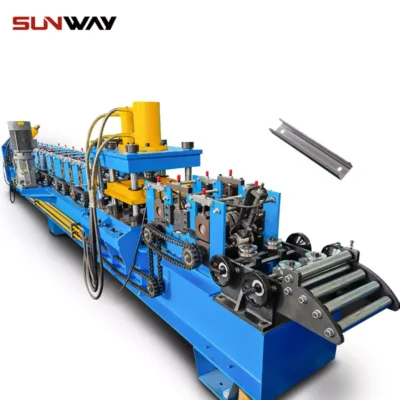 Section C renforçant la machine de formage de rouleaux de poteau de support de stockage Omega
Section C renforçant la machine de formage de rouleaux de poteau de support de stockage Omega -
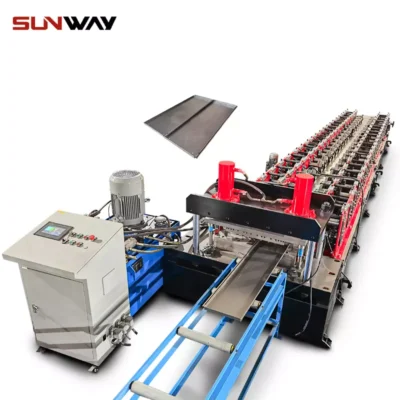 Plaque de boîte en acier faisant la machine de formage de rouleaux
Plaque de boîte en acier faisant la machine de formage de rouleaux -
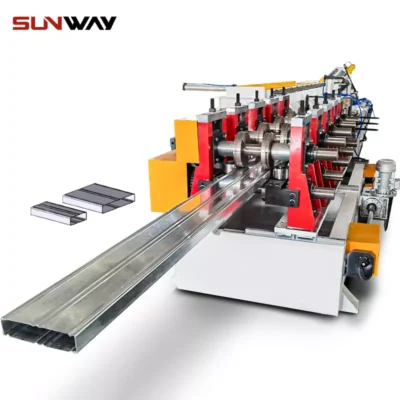 Petit pain en acier de poutre en caisson formant la machine pour la colonne d'étagère
Petit pain en acier de poutre en caisson formant la machine pour la colonne d'étagère -
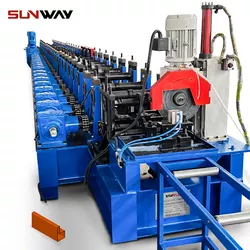 Pallet Racking Step Beam P Beam Roll Machine de formage
Pallet Racking Step Beam P Beam Roll Machine de formage
Efficacité de la machine en Revêtement de toiture métallique Production
Les tôles de bardage métallique sont généralement produites à l'aide de machines de profilage, qui peuvent transformer différents types de métal dans les profils souhaités. L'efficacité de ces machines influe sur la vitesse de production et la qualité globale.
| Paramètres de la machine | Efficacité Détails |
|---|---|
| Vitesse | Varie de 10 à 60 mètres par minute selon le modèle de la machine. |
| Consommation électrique | Généralement entre 5 et 15 kW par heure, en fonction du matériau. |
| Durée du cycle | La durée est comprise entre 2 et 5 secondes par panneau. |
| Capacité | Il est possible de produire jusqu'à 5 000 mètres carrés de bardage par jour. |
Paramètres mécaniques personnalisés pour les revêtements de toits métalliques
Lors de l'achat de profileuses, il est important de prendre en compte les options personnalisables pour répondre aux besoins spécifiques du projet.
| Paramètres personnalisables | Description |
|---|---|
| Épaisseur de la feuille | Réglable entre 0,3 mm et 1,2 mm en fonction du matériau. |
| Longueur du panneau | Peut être personnalisé pour des portées de toit plus longues ou plus courtes. |
| Plage de largeur | Les options vont généralement de 600 à 1200 mm. |
| Type de profil | Différents profils comme le profilé ondulé, le joint debout ou le profilé plat. |
| Revêtement de couleur | Disponible en différentes finitions, y compris mate et brillante. |
Applications des revêtements de toiture métalliques
Les revêtements de toiture métalliques sont utilisés dans un large éventail d'applications de construction, des maisons résidentielles aux bâtiments commerciaux et même aux installations industrielles.
| Application | Description |
|---|---|
| Toiture résidentielle | Populaire dans les habitations en raison de son attrait esthétique et de sa durabilité. |
| Bâtiments commerciaux | Souvent utilisé pour les bureaux, les magasins de détail et les centres commerciaux. |
| Installations industrielles | Choisi pour sa solidité et sa capacité à résister aux conditions difficiles. |
| Bâtiments agricoles | Utilisé pour les granges, les hangars et autres structures où la résistance aux intempéries est cruciale. |
| Institutions publiques | Les écoles, les bibliothèques et les bâtiments publics utilisent souvent des bardages métalliques pour leur durabilité à long terme. |
Installation, exploitation et entretien des revêtements métalliques de toiture
L'installation, l'utilisation et l'entretien corrects d'un revêtement de toiture métallique garantissent que votre toiture fonctionnera de manière optimale et durera des décennies.
| Processus | Description |
|---|---|
| Installation | Il s'agit de planifier, de mesurer, de découper et de fixer les panneaux de revêtement. Une installation correcte est essentielle pour éviter les fuites et garantir la longévité. |
| Fonctionnement | Une fois installé, le revêtement protège le toit des facteurs environnementaux tels que la pluie, la neige et le soleil. |
| Maintenance |
Le bardage métallique nécessite peu d'entretien, mais il est recommandé de vérifier régulièrement l'absence de fixations desserrées, de corrosion et de problèmes d'étanchéité.
Détails des fournisseurs et des gammes de prix pour Metal Roof Cladding
Il est essentiel de trouver le bon fournisseur pour obtenir un bardage métallique de qualité à un prix raisonnable. Vous trouverez ci-dessous une liste de quelques fournisseurs populaires et des fourchettes de prix pour différents types de bardages métalliques :
| Fournisseur | Matériel proposé | Fourchette de prix (par mètre carré) |
|---|---|---|
| ABC Metal Roofing | Acier galvanisé, Aluminium | $10 – $30 |
| Groupe Kingspan | Acier, Zinc, Aluminium | $15 – $35 |
| Vente de métaux | Cuivre, aluminium | $20 – $45 |
| McElroy Metal | Acier, Zinc | $12 – $28 |
Comment choisir le bon fournisseur de bardages métalliques pour toitures
Pour choisir le bon fournisseur de bardages métalliques, il faut tenir compte de plusieurs facteurs. Voici ce qu'il faut garder à l'esprit :
| Considération | Description |
|---|---|
| Qualité des matériaux | Assurez-vous que le fournisseur propose des métaux de haute qualité, durables et conformes aux normes industrielles. |
| Réputation | Recherchez des fournisseurs qui ont de bonnes critiques et qui ont l'habitude de fournir des produits fiables. |
| Options de personnalisation | Certains fournisseurs offrent plus d'options de personnalisation que d'autres, ce qui peut être important pour des projets spécifiques. |
| Tarification | Comparez les prix des différents fournisseurs pour trouver la meilleure offre sans sacrifier la qualité. |
| Délai d'exécution | Tenez compte de la rapidité avec laquelle le fournisseur peut livrer les matériaux, en particulier pour les projets de grande envergure. |
Avantages et inconvénients des revêtements de toiture métalliques
Lorsque vous choisissez un revêtement de toiture métallique, il est essentiel de peser le pour et le contre afin de déterminer s'il s'agit du bon choix pour votre projet.
| Avantages | Inconvénients |
|---|---|
| Durabilité | Ils peuvent durer jusqu'à 50 ans s'ils sont correctement entretenus. |
| Efficacité énergétique | Réfléchit la chaleur, réduisant ainsi les coûts de refroidissement. |
| Flexibilité esthétique | Disponible dans une variété de couleurs et de finitions. |
| Résistance au feu | Incombustible, il offre une sécurité supplémentaire. |
| Coût initial | Coûts initiaux plus élevés que pour d'autres matériaux. |
| Bruit | Peut être plus bruyant en cas de forte pluie, à moins d'utiliser une isolation adéquate. |
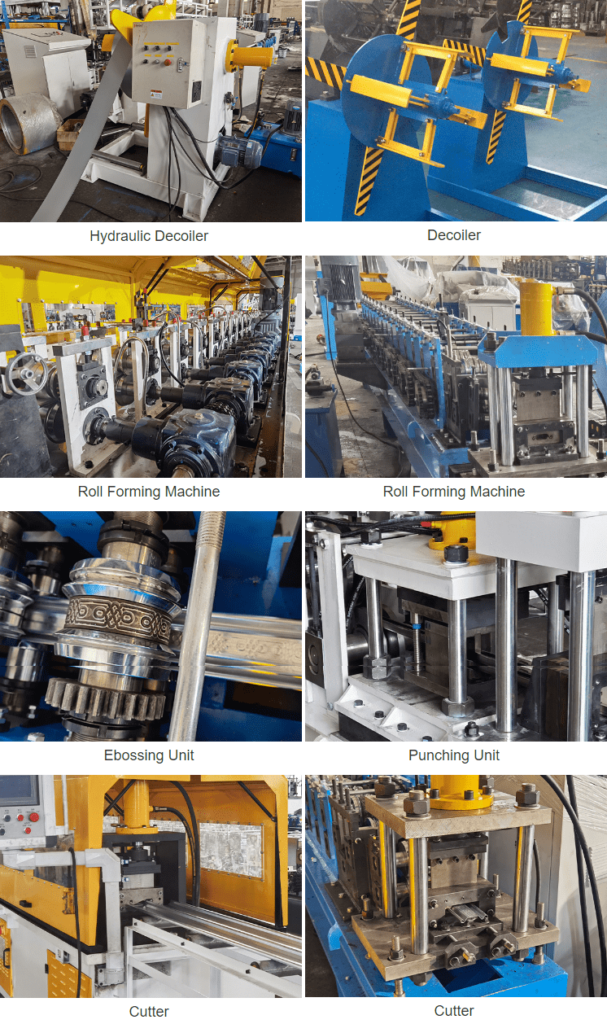
FAQ
| Question | Réponse |
|---|---|
| Quelle est la durée de vie d'un revêtement de toiture métallique ? | Le revêtement métallique des toits peut durer de 40 à 70 ans, selon le matériau utilisé. |
| Le bardage métallique est-il bruyant ? | Sans une isolation adéquate, les toits métalliques peuvent être bruyants en cas de pluie ou de grêle, mais cela peut être atténué par des techniques d'insonorisation. |
| Les couvertures métalliques peuvent-elles résister à des conditions météorologiques extrêmes ? | Oui, les toits métalliques sont très résistants au vent, à la grêle et aux fortes pluies, ce qui les rend idéaux pour les climats extrêmes. |
| Les couvertures métalliques sont-elles efficaces sur le plan énergétique ? | Les toits métalliques sont très efficaces sur le plan énergétique en raison de leurs propriétés réfléchissantes, qui peuvent réduire les coûts de refroidissement jusqu'à 25%. |
| Quelles sont les exigences en matière de maintenance ? | Les toits métalliques ne nécessitent qu'un minimum d'entretien, mais il est recommandé de vérifier périodiquement que les fixations ne sont pas desserrées et qu'il n'y a pas de corrosion. |
Conclusion
Revêtement de toiture en métal offre une solution robuste, polyvalente et esthétique pour les bâtiments modernes. Il existe différents types de bardages métalliques, chacun présentant ses propres avantages. Le choix dépend en fin de compte de vos besoins spécifiques, de vos préférences et de votre budget. Que vous installiez un bardage sur une maison résidentielle ou un bâtiment commercial, la compréhension des types, du processus d'installation et des exigences en matière d'entretien vous aidera à prendre une décision éclairée pour votre prochain projet.
